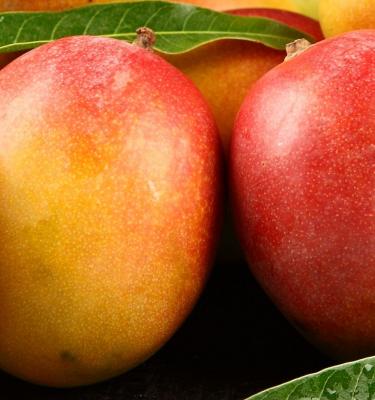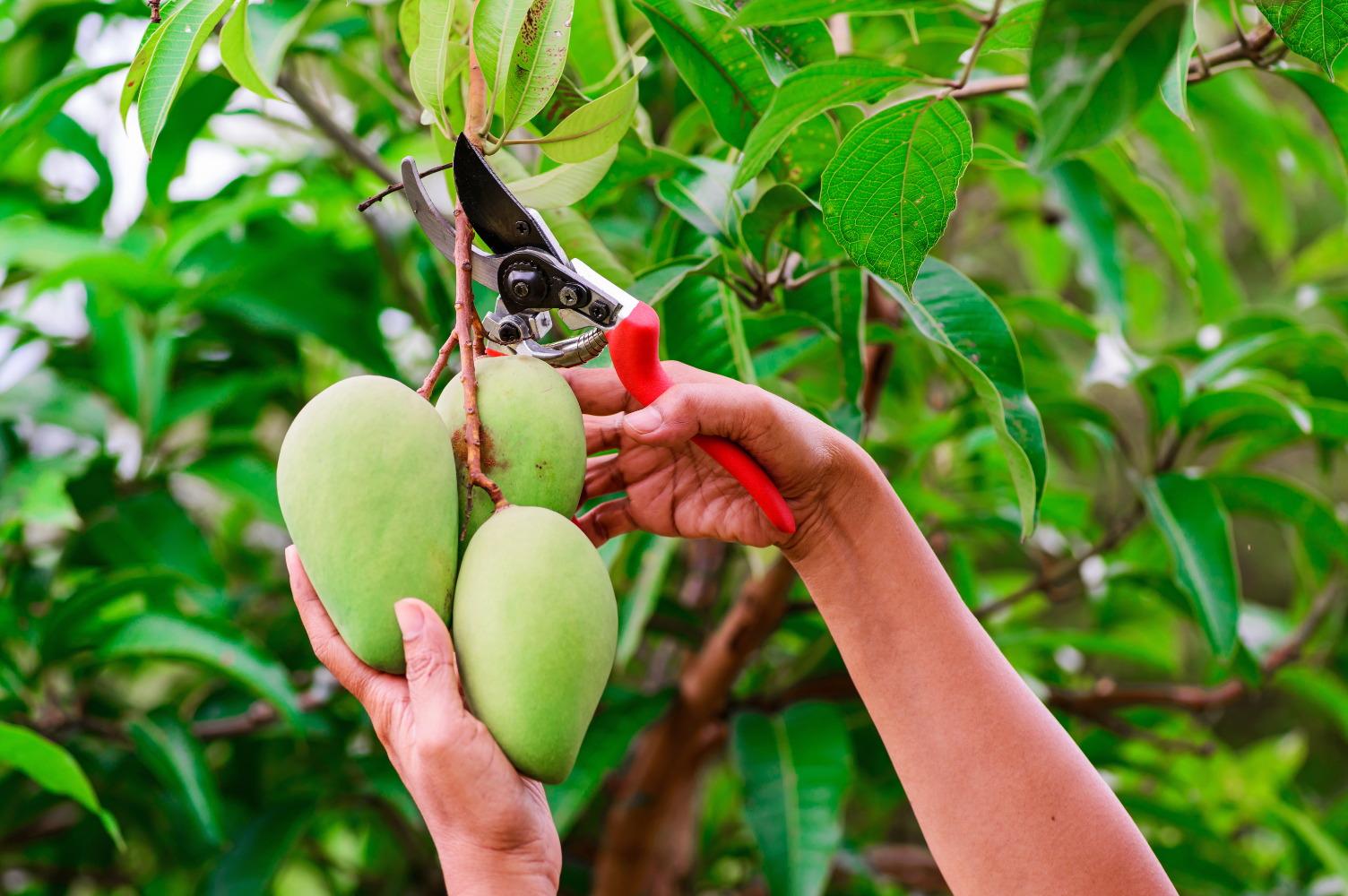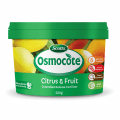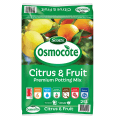

How to Grow a Mango Tree
Mangoes are the classic summer fruit, loved for their sweet and juicy flesh. Mango trees thrive in tropical and subtropical climates with hot, humid summers and mild, dry winters with no frost.
Mango trees are large, productive, evergreen trees reaching around 10 metres tall - so make sure you’ve got the space for them or look for dwarf mango varieties with a more manageable height of around 3-4 metres. Mango trees can be grown from seeds, although they can take up to 8 years to produce fruit. For a faster harvest grow mangoes from potted plants, which should begin fruiting about 3 years after planting.
5 top tips for growing mango
- Choose a full sun spot with a moist, but free draining soil or grow in a dwarf mango tree in a large pot
- Improve the soil before planting mango trees with Scotts Osmocote® Plus Organics Citrus & Fruit Plant Food & Soil Improver and Scotts Osmocote® Controlled Release Fertiliser: Citrus & Fruit
- Fertilise mango trees at least twice a year in spring and again in summer with Scotts Osmocote® Controlled Release Fertiliser: Citrus & Fruit or as instructed on the pack
- Mango trees need regular watering, especially when young or flowering and fruiting.
- Stake young mango trees to protect them from strong winds.
Essential shopping list for growing mango trees
- A potted mango plant or a mango seed
- Scotts Osmocote® Plus Organics Citrus & Fruit Plant Food & Soil Improver
- Scotts Osmocote® Controlled Release Fertiliser: Citrus & Fruit
- Garden trowel
- If growing in containers you’ll need a large pot or planter plus Scotts Osmocote® Citrus & Fruit Potting Mix
- Defender™ Pyrethrum Insect Spray
- Mulch
Prepare
Choose a full sun spot, with a moist but free draining soil for your mango tree. It’s best to plant mango trees in late winter or early spring.
Dig the hole for your mango tree twice as wide as the original pot or root ball and the same depth. Loosen the original soil at the bottom of the planting hole and mix Scotts Osmocote® Plus Organics Citrus & Fruit Plant Food & Soil Improver and Scotts Osmocote® Controlled Release Fertiliser: Citrus & Fruit through the backfill soil and the soil at the base of the hole.
How to plant mango trees in the garden
Remove the mango tree from the nursery pot and position it in the prepared hole, at the same depth it was in the pot. Backfill around the root ball and position 1 or 2 stakes either side of the plant with some soft ties around them and the main stem to protect the young tree from strong winds.
Water in your new mango tree to settle its roots in and continue regular watering as the tree establishes.
Fertilise mango trees in spring and summer with Scotts Osmocote® Controlled Release Fertiliser: Citrus & Fruit at the recommended rate. Mulch around the root zone of your mango tree with an open organic mulch to retain moisture and suppress weeds.
Annual mango tree pruning isn’t needed to encourage fruit growth, however it’s a good idea to prune young trees to have a single main trunk for easy maintenance around the tree once it’s fully grown. Each year remove any dead, diseased or damaged growth as needed.
How to plant mango trees in pots
You can grow mango trees in large pots or containers. Choose a dwarf or compact growing mango variety and then a pot that’s at least 50cm deep by 50cm wide, with plenty of drainage holes. Fill the pot with Scotts Osmocote® Citrus & Fruit Potting Mix - remove the mango tree from the nursery pot and place in the centre of the pot, back fill around the root ball and water it in well.
Feed in spring and again in summer with Scotts Osmocote® Controlled Release Fertiliser: Citrus & Fruit at the recommended rate. Apply an open organic mulch over the surface of the potting mix to retain moisture and suppress weeds.
How to grow a mango tree from a seed
To germinate mango trees from seeds you’ll need to save the seed from a fully ripe mango. Remove the hairy outer husk or shell to reveal the smooth seed inside.
Sow the mango seed into pots filled with Scotts Osmocote® Citrus & Fruit Potting Mix - the wider half of the mango seed should be pointing upwards and left exposed above the potting mix.
Keep the potting mix moist, but not soggy and place the pots in a warm spot. The mango seed will take 2-3 weeks to germinate. When the mango seedlings have a strong healthy root system and plenty of foliage growth, they can be planted into your prepared garden soil or a large pot as above.
When do mango trees fruit in Australia?
Mangoes are ready to harvest around 100-150 days after flowering. Their skin will turn from green to yellow, orange or red depending on the variety. Wear gloves and use a pair of secateurs to cut the fruit from the tree - taking care not to get the sap on your bare skin as it can cause irritation.

Mango fruit diseases, pests & other problems
To reduce the risk of fungal or bacterial diseases occurring on the leaves, avoid watering the leaves of your mango tree and keep the canopy of the tree open to allow good airflow between the branches. Practice good garden hygiene by removing fallen leaves from around the base of your mango trees and clean gardening tools with methylated spirits between before and after pruning.
If scale or mealy bug infestations occur spray with Defender™ Pyrethrum Insect Spray as per label instructions.
Protect your mango harvest from bird, possum or Queensland Fruit Fly using wildlife friendly netting over the tree or small fine netting bags over each fruit.



